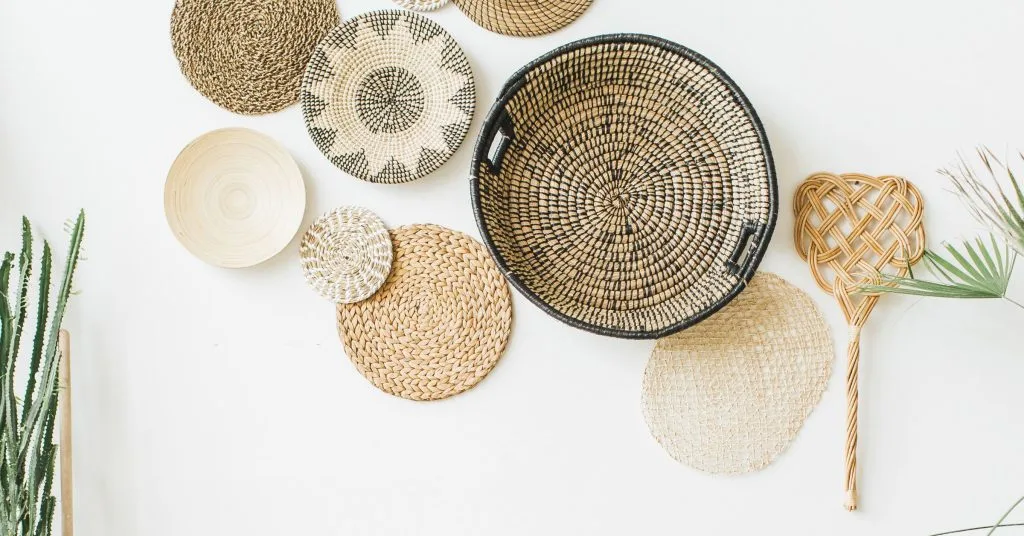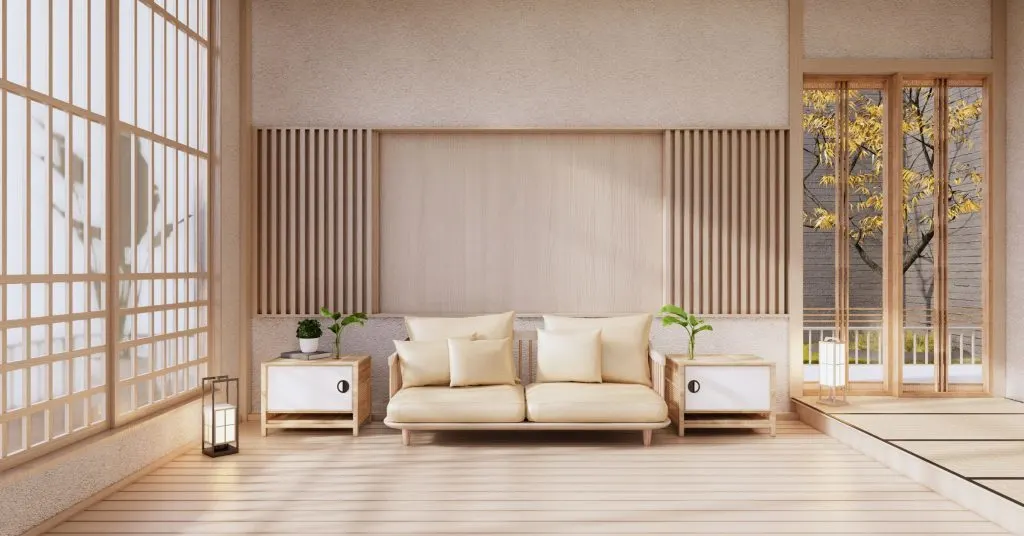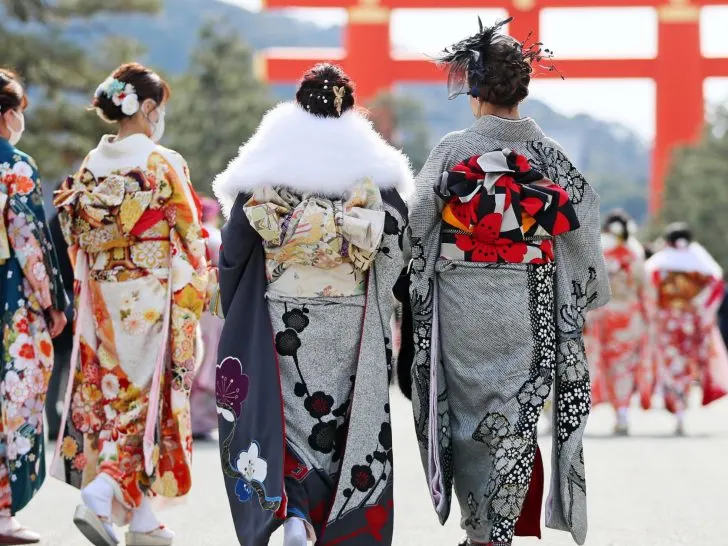In honor of my kids and our two-year journey living in Japan, this post explores the beauty and simplicity of minimalism in Japan.
Discover the Tranquil World of Japanese Minimalism
Have you ever wondered why minimalism in Japan seems so effortlessly serene and functional?
Minimalism, deeply ingrained in Japanese culture, extends beyond having fewer things. Instead, it intertwines with daily life as a philosophy that provides peace and clarity. In this journey through the elegant simplicity of Japanese minimalism, we’ll explore how it profoundly impacts living spaces, personal well-being, and even spiritual practices.
Skip to:

A Lifestyle Revolution
Minimalism in Japan is more than an aesthetic choice and a conscious lifestyle decision. Influenced by Japan’s traditional Zen Buddhism, many Japanese people find beauty in emptiness and value in fewer, higher-quality possessions. Icons like Marie Kondo and Fumio Sasaki have brought these concepts to the forefront. They show how living with fewer things can lead to a more fulfilling life.
Minimalist Mindset in Japan
Japanese people have great respect for natural resources, which is the easiest way to explain why they take such carful care of every physical item. Handmade items are made by craftsmen who spend a lifetime perfecting their skills and natural imperfections are accepted as part of the story.
Japan’s minimalists came up with a famous process called kintsugi which literally means ‘join with gold.’ If an item breaks their instinct is not to throw it out, instead they fix the item with gold and consider the item more beautiful than before.
Women especially tend to live with their parents until marriage. Traditionally when a woman moves in with her husband she would bring one wooden trunk full of personal items to start her new home life. This kind of natural item restriction lends itself to staying fairly minimalistic.
Logistical Reasons for Minimalism in Japan
Aside from their mindset there are additional practical reasons that Japanese people embrace minimalism. Residences in Japan tend to be quite small because of limited space, especially in the large cities, but also because home it not commonly where they socialize.
In cities like Tokyo and Osaka it is less common for an average person to have a personal vehicle. Everyday life in Japan includes lots of walking and mass transit. Even shopping means carrying every item home in a personal shopping bag, which makes it difficult to own as much stuff.
Disposing of trash in Japan is commonly considered a very difficult process. Public garbage cans are non-existent and home trash has over a dozen unique categories. I would say minimalism is a great idea for an average Japanese person because they won’t have to spend a lot of time figuring out how to get rid of an unwanted item later.
Your Guide to Understanding and Adopting Minimalism
This post isn’t just a rundown of minimalist design or an interrogation of the average person’s living room. It’s a friendly guide, offering insights into how minimalism in Japan has evolved to a modern lifestyle embraced globally. We’re shining a light on the heart of Japanese aesthetics, from the Japanese art of decluttering to embracing natural beauty in every corner of your home.
The Essence of Japanese Minimalism
Rediscovering Simplicity and Functionality
Minimalism in Japan is a timeless art form. Rooted in the country’s rich history and Zen Buddhism, this lifestyle emphasizes natural beauty and simplicity. From the serene tea ceremonies of the 12th century to the minimalist design of modern Japanese homes, each element reflects a deep appreciation for less being more. Beyond empty space, the focus is on establishing room for tranquility. These examples of minimalism showcase a harmony with the natural world and embody good taste in every aspect.

The Cultural Impact of Japanese Minimalism
A Lifestyle Intertwined with Daily Life
Japanese minimalism is a trend and a cultural phenomenon. It shapes how Japanese people live, from the pairs of socks in their drawers to the layout of their living rooms. This approach to life, celebrating fewer things and cherishing each item, resonates in every aspect of Japanese culture, offering lessons in living a meaningful, clutter-free life. It’s evident in the simplicity of a tea ceremony, the practicality of owning just the right number of pairs of trousers, and the serene organization of a traditional house. This minimalist philosophy, a natural outgrowth of Zen Buddhism, plays a crucial role in how the Japanese navigate everything from city life to personal space in a small apartment. Embracing this conscious lifestyle choice means appreciating what you have and finding beauty and functionality in simplicity, a stark contrast to the cluttered and busy lives many lead in the Western world.
Key Figures and Philosophies
Influencers of Minimalism
Marie Kondo and Fumio Sasaki have become synonymous with minimalism in Japan. Kondo’s ‘Life-Changing Magic of Tidying Up’ and Sasaki’s ‘Goodbye, Things’ aren’t just books, they’re blueprints for a minimalist lifestyle. Their philosophies go beyond decluttering, advocating a deeper connection with our possessions and spaces. Other new Japanese minimalism influencers include Naoki Numahata and Katsuya Toyoda who each add unique perspectives to the growing number of young minimalists. Their work and insights further enrich our understanding of this profound lifestyle choice.
Minimalism and Interior Design in Japan
Japanese Interior Aesthetics
Japanese architecture is a testament to minimalist principles. Emphasizing clean lines, natural materials, and neutral tones, Japanese homes embody a sense of calm and order. In the Japanese design philosophy, every object serves a purpose, blending functionality with natural beauty, and creating harmonious open spaces. This approach is not only about fewer possessions but also about choosing items of high quality that last longer and add value to life. Interestingly, the influence of Japanese minimalist design has reached far beyond its borders, inspiring American artists in the United States and other parts of the world, showcasing the universal appeal of simplicity and quality.
Minimalism and Spirituality
Finding Peace in Simplicity
Minimalism and Zen Buddhism are intrinsically linked in Japan. This connection is evident in the tranquil Zen gardens and the meticulous zen temples. It’s a spiritual practice that values the beauty of nature and the art of living simply, focusing on the essence rather than the excess.
Minimalism in Modern Japan
A Growing Trend
Today, minimalism in Japan reflects a modern twist on traditional practices. Younger generations are adopting this minimalist lifestyle, seeking less clutter and more meaning in their lives. It’s a growing movement, reshaping how the average person views possessions and space. Remember, at it’s core, minimalism is not about having less stuff it’s about having more meaning, more time, and more experiences.

Minimalist Parenting Practices
A mash up of situations lead to perpetuating minimalism for kids in Japan. First, there is an extreme focus on education so items like gaming consoles or toys are less of a priority in a Japanese home. Second, Japan is so safe that kids are given freedom to ride their bike to the park or meet up with friends freely without parental supervision. And third, free time is spent outside of the home at arcades, play centers, and other experienced based activities.
Even the language parents use with their children emphasizes action and movement which improves a person’s imagination. For example, in America a parent might point to a fire truck and say to a toddler, ‘Look a fire truck.’ In Japan a parent would point to that same fire truck and say, ‘Doesn’t that shiny red fire truck go fast?’ There is a strong emphasis on verbs and adjectives over nouns which strikes me as the first step in their journey to modern minimalism.
Experiencing Minimalism in Japan
A Traveler’s Perspective
Visitors to Japan can immerse themselves in minimalism firsthand. From staying in a traditional Japanese house to exploring original minimalism paintings, these experiences offer a glimpse into a lifestyle where less is more. It’s an opportunity to understand the harmony and balance that minimalism brings.
Minimalism Beyond Borders
Japanese Minimalism’s Global Echo
Japanese minimalism has transcended borders, influencing interior design and lifestyles worldwide. Its principles resonate with people globally, inspiring a shift towards a more mindful and simplified way of living. It’s a testament to the universal appeal of Japanese aesthetics and philosophy.
Practical Tips for Incorporating Minimalism
Embracing Minimalism in Your Daily Life
Adopting minimalism in your life doesn’t have to be daunting. Start by decluttering, choosing high-quality over high-quantity, and appreciating open space. Embrace natural elements and neutral colors in your decor. It’s about making conscious choices that align with the minimalist ethos.
See also: Can Minimalism Be Colorful
Embracing the Serenity of Minimalism in Japan
A Journey Through Timeless Simplicity
As we conclude our exploration of minimalism in Japan, it’s clear that this isn’t just a fleeting trend. It’s a profound philosophy that has woven its way through centuries of Japanese culture, influencing everything from the natural elegance of garden design to the functional beauty of modern interior space. This journey has shown us that minimalism in Japan is much more than an aesthetic choice. It is a pathway to a more mindful and serene way of life.

The Lasting Impact of Japanese Minimalism
The principles of minimalism in Japan offer a blueprint for a life filled with purpose, clarity, and harmony. This minimalist lifestyle, deeply rooted in Zen Buddhism and Japanese aesthetics, teaches us the value of cherishing fewer things and finding beauty in open, uncluttered spaces. It’s a lesson that resonates well beyond the borders of Japan, inspiring people globally to embrace a minimalist approach in their daily lives.
The Future of Minimalism in Japan
An Evolving Trend
As we look to the future, minimalism in Japan is poised to evolve further. It continues to inspire new-age minimalists and influence designs and lifestyles globally. The enduring appeal of this simple yet profound way of life suggests it will continue to shape cultures and mindsets for years to come.
Carrying the Minimalist Torch Forward
As we step into our own living spaces and lives, let’s take inspiration from the minimalist concepts of Japan. Whether it’s through adopting a few minimalist design elements, appreciating the beauty of natural materials, or simply learning to live with less, we can all incorporate aspects of Japanese minimalism into our everyday routines. The journey of minimalism in Japan is about enriching life.
Minimalism in Japan is more than a concept, it is a lifestyle. A lifestyle that teaches us the power of simplicity, the joy of less, and the peace that comes from a clutter-free environment. Let’s carry these lessons forward and find our own path to alignment and happiness.


